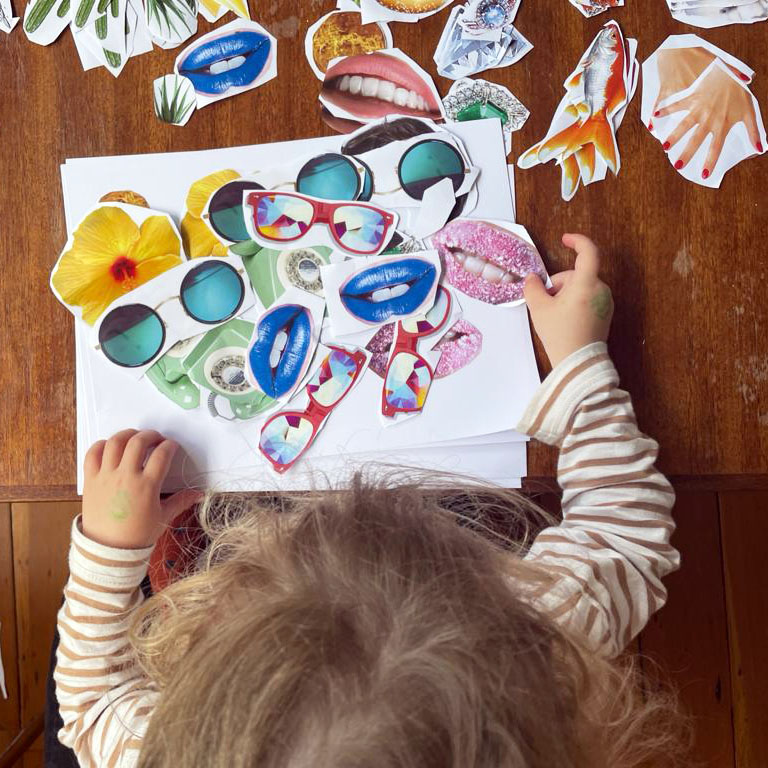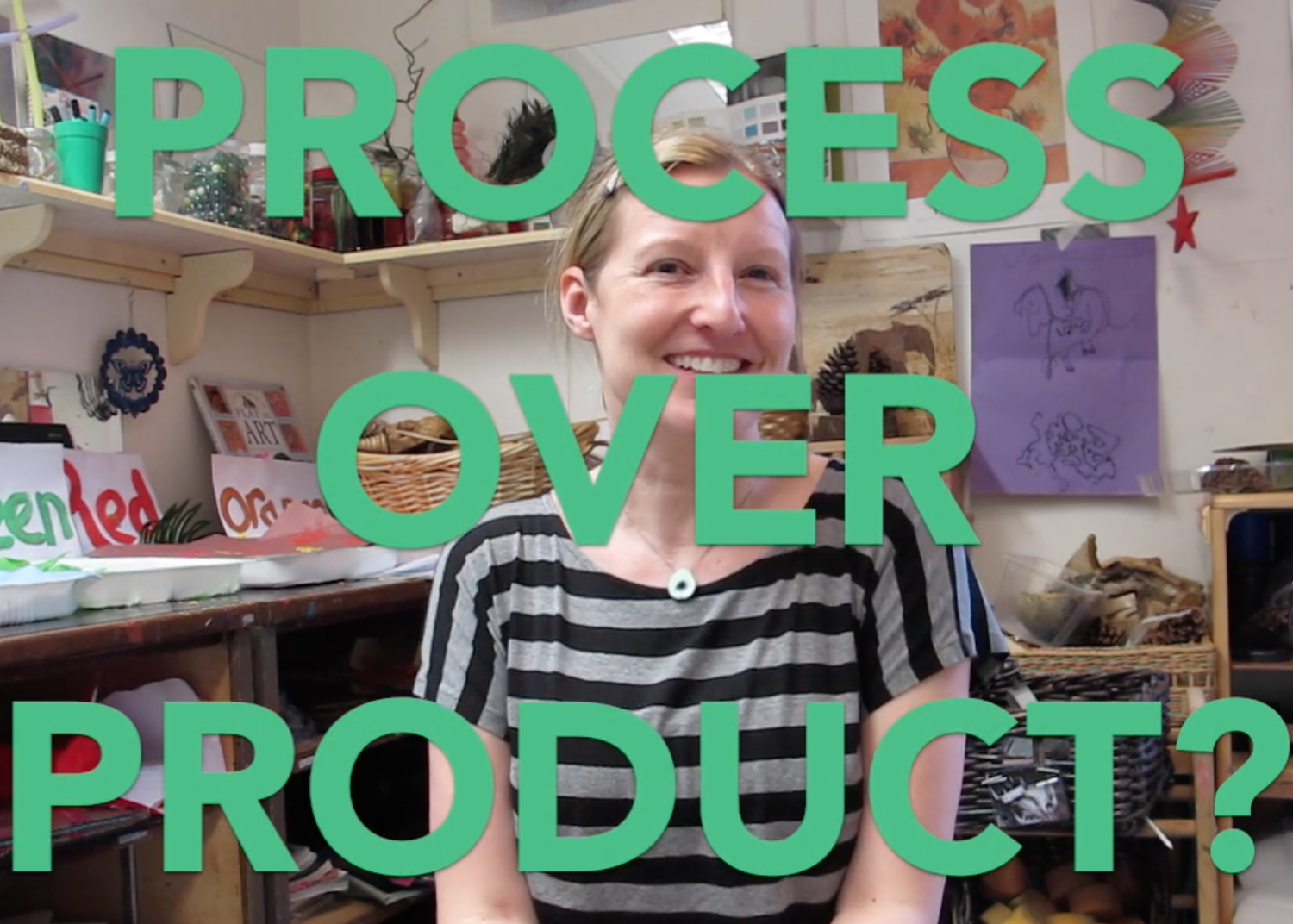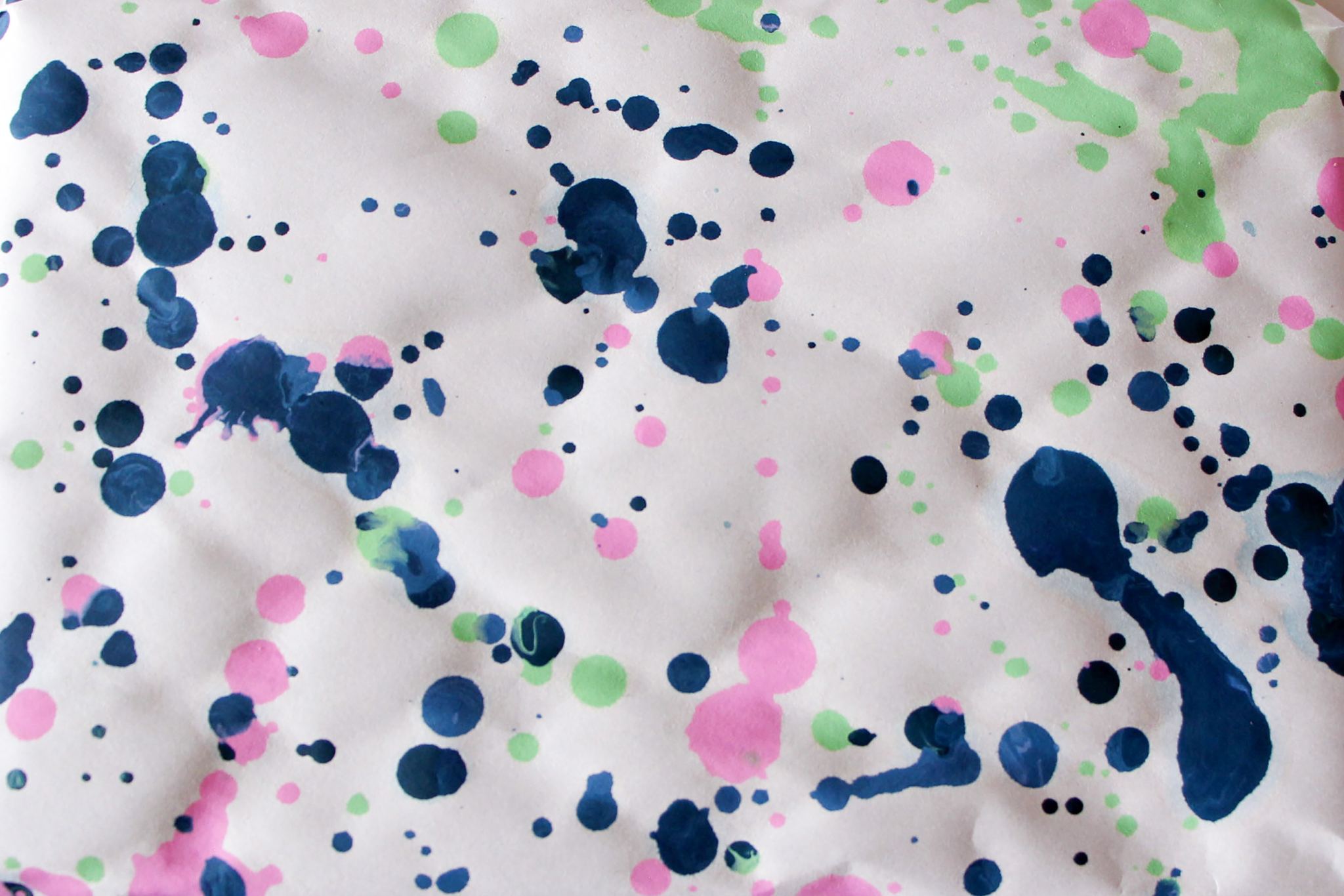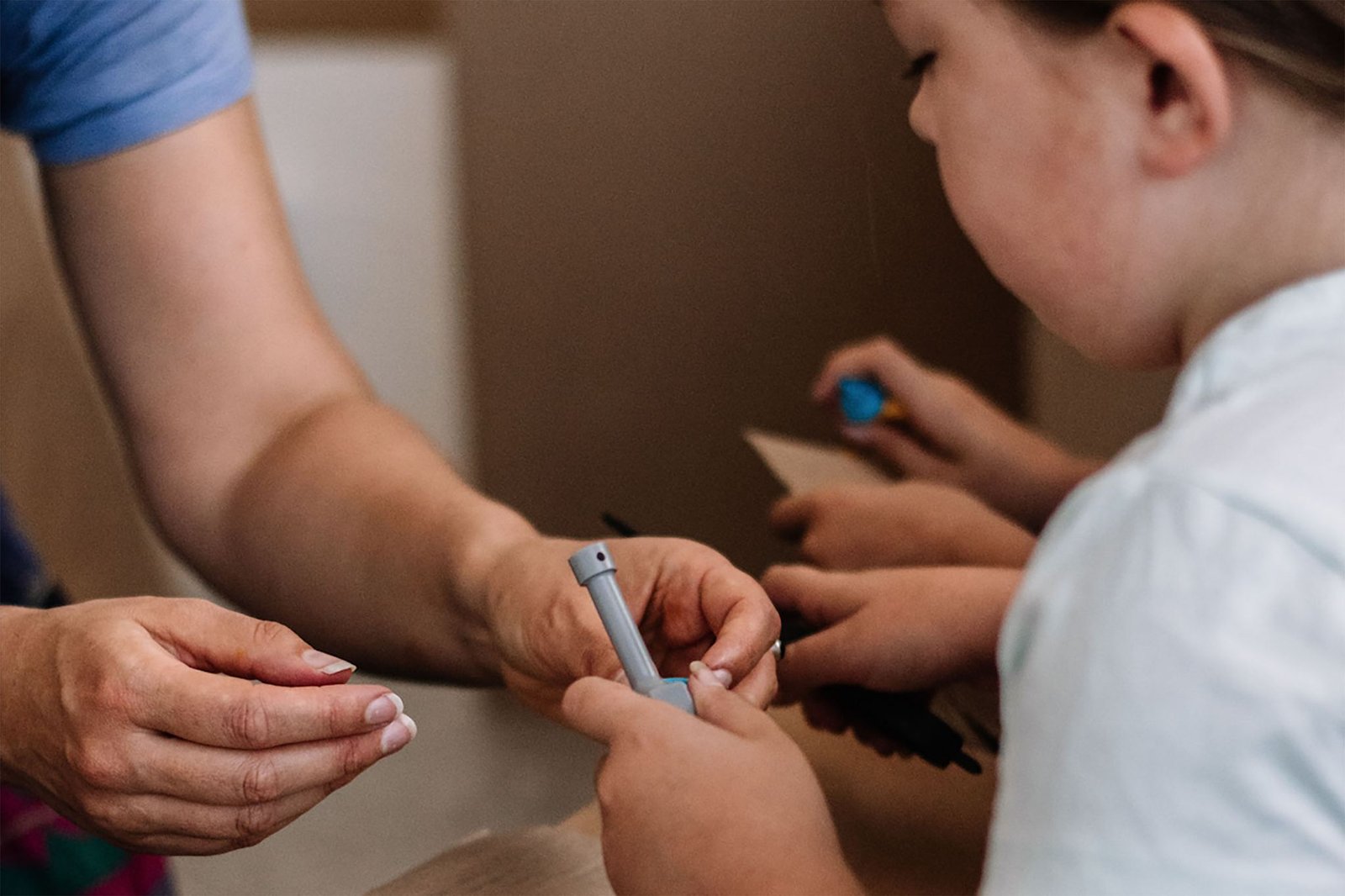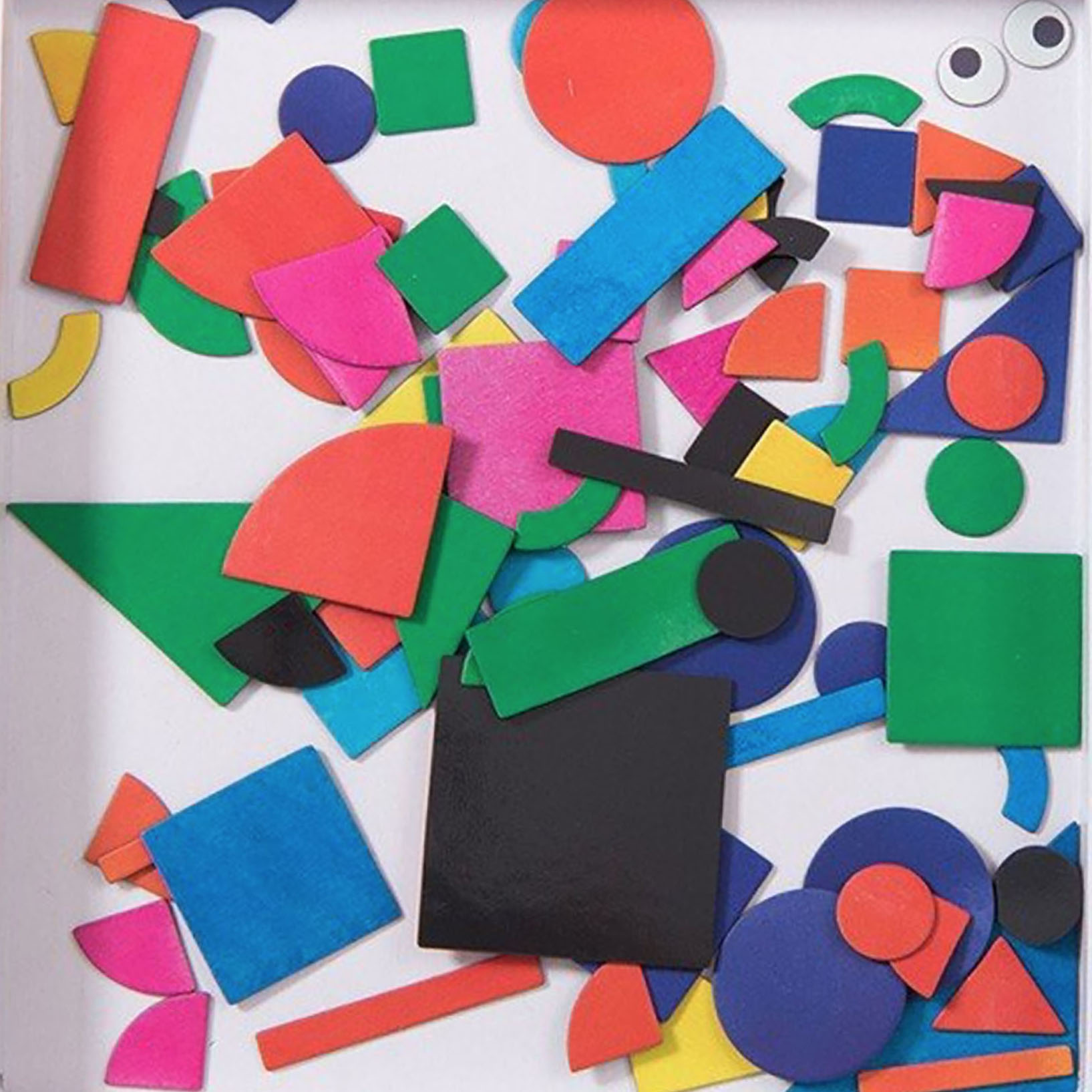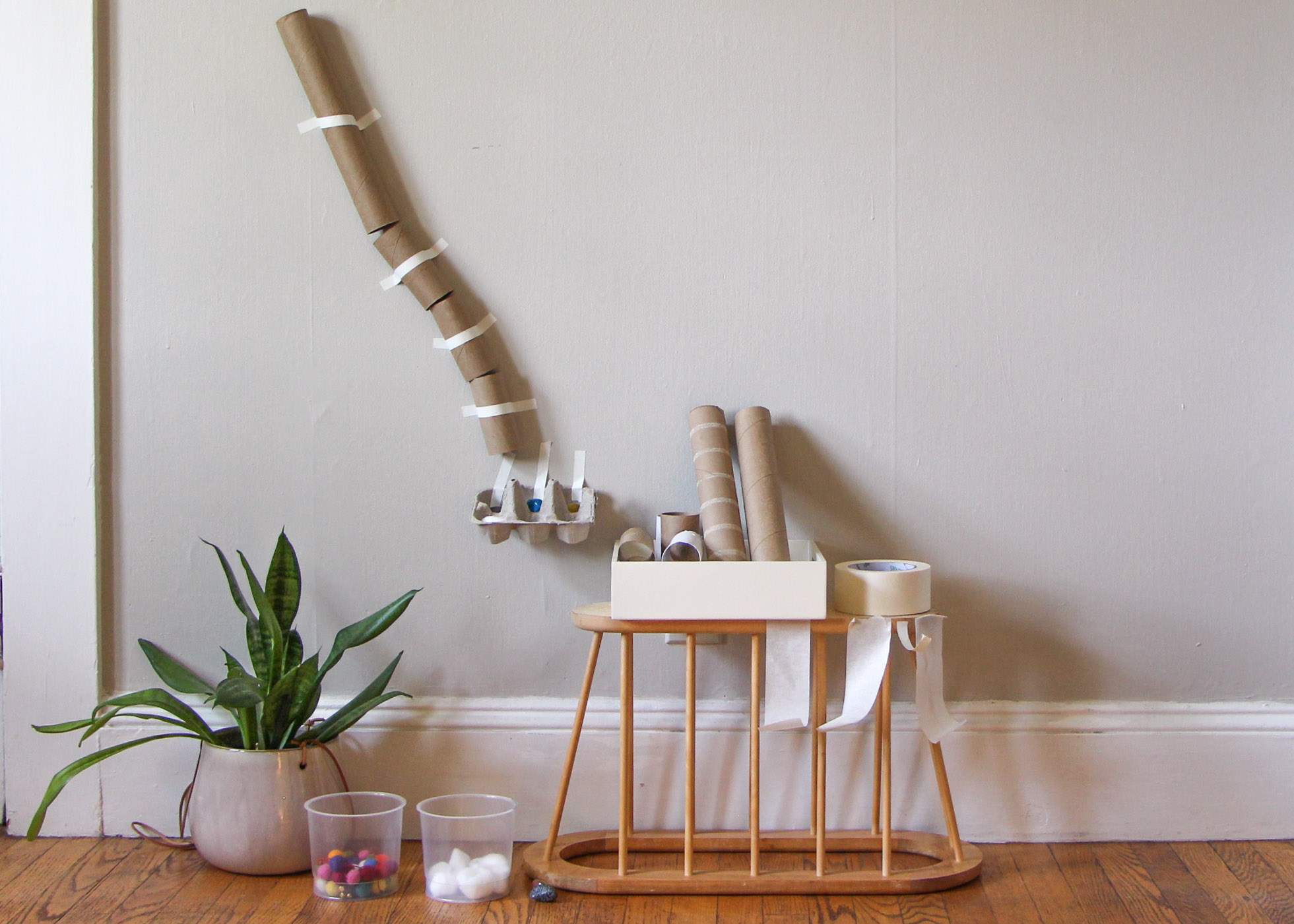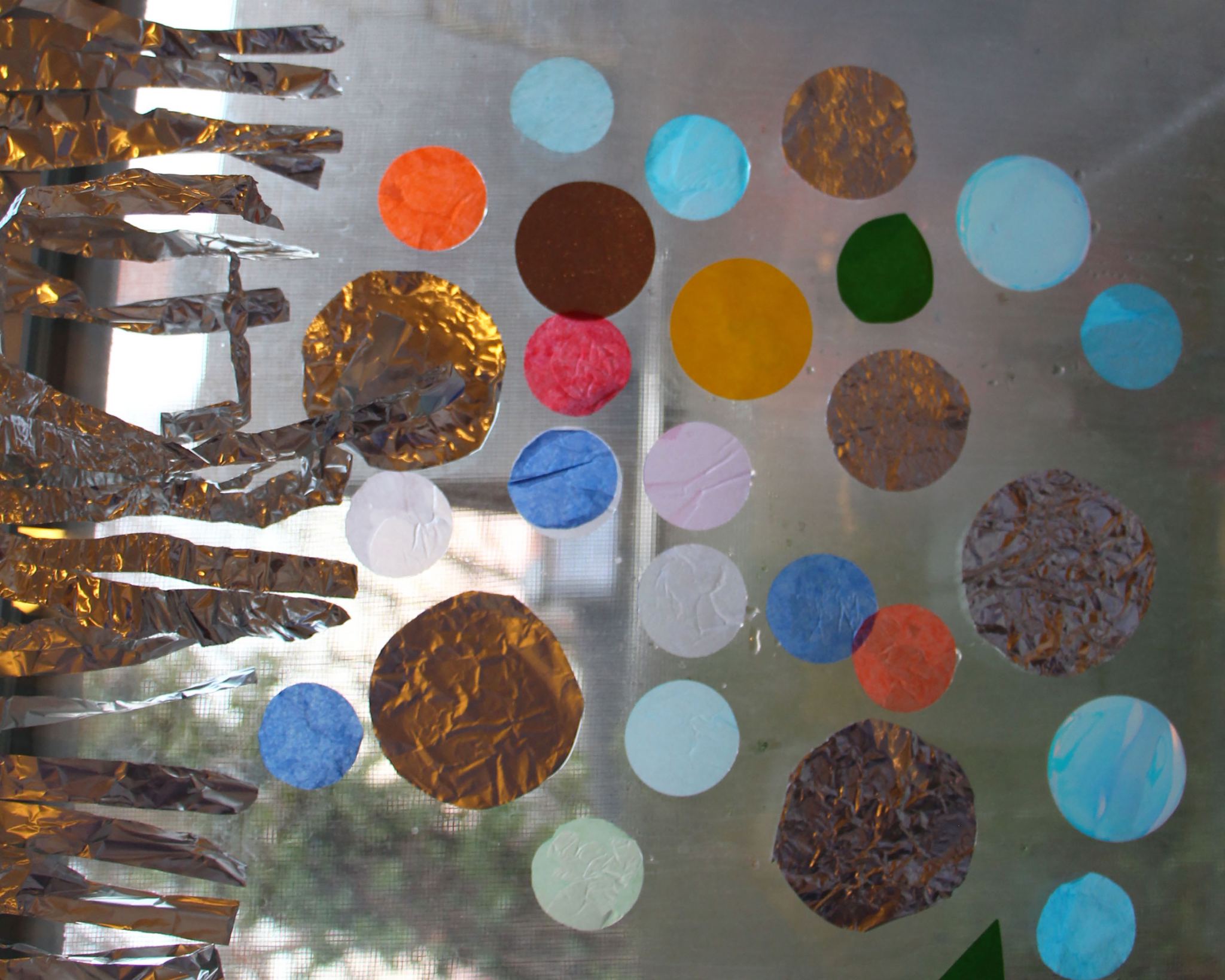I am so happy to share a new print-out that features thought-provoking quotes from inspiring artists and educators. The printable PDF resource includes five quotes, each beautifully laid out so all you have to do is print them out and stick them up! I came across each of these quotes over the past 10 years while working in children’s art education. Each one was diligently scribbled down in my notebook and dog-eared for a later date. That time is today! Here is some background of each quote: ‘The mind is like an umbrella. It is most useful when open.’ Walter Gropius Walter Gropius was an architect who was most famous for his role as the director of the revolutionary art school, the Bauhaus. Born in Berlin, he migrated to Cambridge, Massachusetts to work at the Harvard School of Design following the outbreak of World War 2. He is regarded as…
Free printable: Make a Collage
So happy to share my new ‘Make a Collage’ activity for families! This 5-page print out features colorful images that kids can print out, cut up, and make new crazy compositions from. Collages were made famous by Surrealist artists like Max Ernst, Marcel Duchamp, and Man Ray. I love them because they encourage children to use their imagination to create original and creative artworks. They are also a great way for young children to practice their cutting and pasting fine motor skills! Download the activity hereDownload I would LOVE to see the creations your family makes so please add the hashtag #ArtPlayChildrenLearning to any social media pics you upload so I can cheer you along. You may like to also check out the work of Anna Bu Kliewer and Jazz Grant for inspiration! Happy making! Louisa Related Posts Free ebook! Making art with repurposed materials Free printable quotes on art and education Free printable for…
An interview with artist Lorna Rose
This post features a video interview with artist Lorna Rose. She talks about her approach to creative learning, like the importance of flexibility, multiculturalism, and inclusivity in education. We live in a world of great cultural, social, and political diversity. As the great art educator Maxine Greene said, the arts play an integral role in the growth of social cohesion by encouraging children to empathize with others from different background. This week I spent two days at the Lillian de Lissa Children’s Centre & Nursery in Birmingham (UK) working alongside their artist-in-residence, Lorna Rose. 90% of the children attending the nursery are from an ethnic minority, over half speak English as a second language. Of the 90 children in attendance, 28 languages are spoken! The nursery’s vision is for children to leave the center with a sense of curiosity about the world. Lorna Rose has been working as the artist-in-residence at the centre for over…
Make homemade wrapping paper
This post shares how you can make your own homemade wrapping paper using objects you likely already have in around your house! Homemade wrapping paper is a great activity to do with kids aged 3 years+. In this post, I share four options for how this can be done. Tools you need Acrylic or tempera paint A roll of plain paper (or another paper surface to print onto)A rolling pin (or a similar sized rolling object, like a drink bottle)A paintbrushBubble wrap Elastic bandsCling filmA lid or wine cork An eye dropper (these plastic ones from Lakeshore Learning are perfect). Alternatively, a spray bottle also works well. Option 1: Block Print Get your child to select a lid (or a similar small, flat object like a wine cork) to use as a stamp Apply paint evenly to the flat side of the lid. You could use a paintbrush to help…
How to scaffold children’s learning
Picture this: A 5-year-old boy has got a new pair of school shoes and is learning how to put them on. He can loosen the laces, slip his foot inside, but does not know how to tie the laces. The child and his father watch a YouTube clip of how to do the shoelaces up. They then have a go at doing the activity together where the father instructs the child on how to weave and tighten the laces step-by-step. It is a success. Each day that follows, the father reduces the intensity of instruction on how to tie the laces until the child can do it independently. The father has scaffolded his child’s learning through the Zone of Proximal Development. Scaffolding children’s learning can involve showing them how to use new art tools What is scaffolding? Scaffolding is an education term that refers to the guidance and skills a…
5 gift ideas for creative kids
Holiday season is here and with it comes the consumerist hellscape of buying presents. Young children are by far my favorite individuals to buy gifts for! There is something so joyful about strolling the kid’s department trying to imagine which toy will bring the most excitement. In this post, I share my top 5 top gifts for children aged 2 to 8 years. While I have included different options for various budgets and ages, all the gifts listed below promote children’s creativity throughout art! 1. Osmo – Starter Kit $79-277 USD (3-10 years old) Osmo is an educational game that runs on iPads and Amazon Fire tablets. It features a suite of applications such as drawing, numeracy, literacy, puzzles, and coding games that all promote children’s creative and critical thinking. Kids use physical objects such as tiles and blocks that are picked up by a mini camera that sits on…
Make a marble run
Marble runs are a classic kid’s activity, you may even remember making them yourself at preschool using pre-constructed wooden tracks! I love marble runs because kids can use their imagination, and problem-solve while unknowingly learning about concepts such as motion, gravity and force. This blog post shares how you can make your own marble run at home using recycled materials! Age range: 18 months + please note that marbles can be choking hazards for little kids Preparation time: 10 minutes What you need Cardboard rolls (toilet paper rolls work great)Recycled materials such as fruit packaging and yogurt containersMasking or painter’s tapeScissorsBowl or basket Marbles or marble alternatives such as cotton balls, pasta shells, felt balls or polystyrene ballsA blank wall or window Setting up the activity A marble run aims to keep the marble in motion for as long as possible. To start, use the tape to stick the first…
Why is dance important in the early years? An interview with Liz Clark
Image credit: Turned on its Head dance company Children love to move! In fact, we were all born to do it. Dance is a fun and creative way to get young children connecting with their bodies. Research has demonstrated it also directly helps with young children’s physical and sensorimotor development. However, while many teachers and parents know that children’s creative movement is important, many are hesitant to do it as they don’t think they are good at it! I recently spoke with Liz Clark, an English early years dance artist, about the importance of dance and creative movement in children’s lives. Liz is the Artistic Director of the Turned on its Head, a dance company that has produced popular children’s dance performances including Sponge and Shiny. In our conversation, Liz shares some fantastic ideas for how adults can do creative movement at home with little ones – no fancy equipment…
Make a window picture
Attention all parents who currently have the kids (unexpectedly) at home! I know that everything feels so overwhelming right now. You are probably thinking ‘how the hell am I going to keep them entertained?’ I get that. It is such a weird time for everyone. So, I am going to do my best to help. I plan to share some different kid’s art projects that you can do at home over the next few weeks. These will all be simple, creative projects that can be done using things you have around the house. First up… Create a window picture The window picture I created in my kitchen! The first kid’s art project I am sharing is so simple but so much fun… creating a window picture! All you need is foil, paper, water and a window. This activity is perfect for children aged 2 years and up. What materials you…



